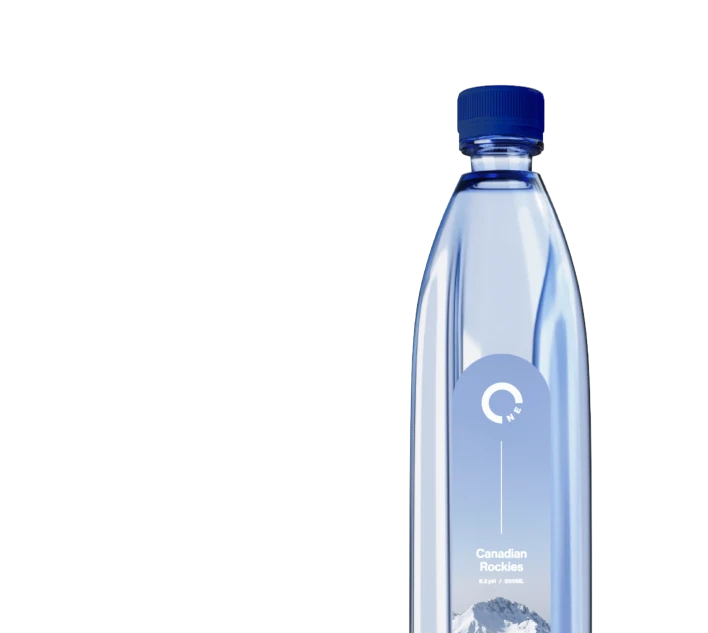When it comes to bottled water, not all tastes the same, and the reason might surprise you. The subtle difference often comes down to one scientific measurement: TDS, or Total Dissolved Solids.
If you’ve ever wondered why some water tastes crisp and clean while others feel heavy or mineral-rich, dissolved solids are likely the culprit.
What Is TDS and Why Does It Matter?
TDS is the measurement of the amount of dissolved substances in water, including minerals, salts, and metals.
It’s measured in parts per million (ppm), and while many of these substances occur naturally, their concentration can significantly affect both taste and quality.
The U.S. Environmental Protection Agency (EPA) suggests that total dissolved solids in drinking water shouldn’t exceed 500 ppm. However, that doesn’t mean lower levels are worse. In fact, many health and taste experts agree that lower TDS water offers a purer, more refreshing experience.
Understanding What Makes Up Total Dissolved Solids
Total dissolved solids may sound vague, but the components are measurable and well-understood. These typically include:
- Calcium
- Magnesium
- Sodium
- Potassium
- Chlorides
- Bicarbonates
- Sulfates
- Small traces of metals like iron and zinc
While some of these minerals are essential in your diet, they are typically consumed primarily through food, rather than water. High concentrations of dissolved minerals in drinking water often alter taste without offering additional health benefits.
How Total Dissolved Solids Affect Taste
Water with high TDS often tastes “minerally,” salty, or even metallic. In contrast, water with fewer dissolved solids is usually described as clean, crisp, neutral, or refreshing.
In blind taste tests, participants consistently rate low TDS water higher for freshness and mouthfeel, meaning fewer dissolved solids can result in less interference with the natural sensation of hydration.
Addressing the Mineral Deficiency Myth
A common misconception is that water with fewer total dissolved solids lacks essential minerals and could potentially harm your health. The Water Quality Association and other research bodies have debunked this idea, noting that:
- The human body gets most of its essential minerals from a balanced diet.
- Drinking water is a negligible source of daily mineral intake.
- Low TDS water does not contribute to mineral deficiency.
Instead, a lower amount of dissolved solids ensures you’re hydrating with minimal interference from unwanted substances — a major benefit for those with dietary sensitivities or high-performance needs.
How to Measure Dissolved Solids in Water
Measuring TDS is simple, even for first-time users. A digital TDS meter provides a quick reading by dipping the sensor into your water sample.
If the number displayed falls below 100 parts per million (ppm), you’re likely drinking water with low total dissolved solids. This quick check provides immediate insight into the purity of your hydration, eliminating the need for complex tools or lab tests.
While these devices offer a helpful snapshot, they don’t reveal the specific substances present, only the total amount. For detailed analysis, laboratory testing is recommended.
Filtration Methods to Achieve Low TDS
If your tap water has high TDS, there are several ways to reduce it:
- Reverse Osmosis: Removes up to 99% of total dissolved solids, including contaminants and minerals.
- Distillation: Heats water to steam, leaving solids behind.
- Deionization: Removes mineral ions through the use of exchange resins.
Each method has its pros and cons. However, if you want water with a naturally low TDS, opting for an ethically sourced spring water is your best choice.
How to Choose Low TDS Bottled Water
Not all bottled waters are created equal. To find low TDS options:
- Check the label: Many brands list dissolved solids levels directly.
- Look for “spring water” from protected sources with naturally low mineral content.
- Avoid “enhanced” waters that add minerals for taste — this usually increases total dissolved solids.
One Water, for example, is sourced from pristine spring regions and undergoes minimal processing to preserve its naturally low mineral count and premium taste.
FAQs About Low TDS Water
What does “low TDS” mean in bottled water?
Low TDS means the water contains a minimal amount of dissolved minerals, salts, and metals, typically below 100 parts per million (ppm). This usually results in a crisper, cleaner taste.
Is low TDS water safe to drink?
Yes. Research confirms that low TDS water is perfectly safe for healthy individuals. Essential minerals primarily come from food, not water.
Does low TDS water taste better?
Many people describe water with fewer dissolved solids as cleaner and more refreshing. Taste tests often show a preference for water with a low dissolved solids count.
How can I test the total dissolved solids in my water?
You can use a digital TDS meter, which provides a quick ppm reading. For more detailed results, consider a professional water analysis.
Final Thoughts: Why Low TDS Matters in Your Bottled Water
Low TDS water is a commitment to cleaner hydration. Whether you’re a wellness-obsessed individual, a frequent flyer seeking consistent quality, or someone who simply values purity, understanding TDS helps you make a more informed choice.
Choose One Water to experience the clarity and calm of water with naturally low total dissolved solids. Your taste buds will notice, and so will your body.




